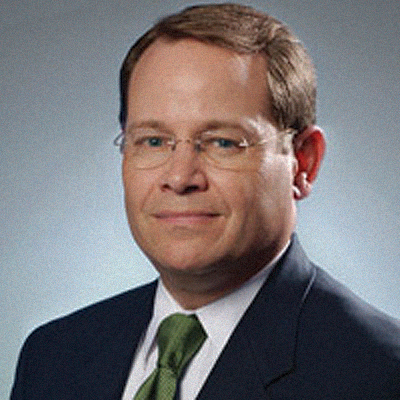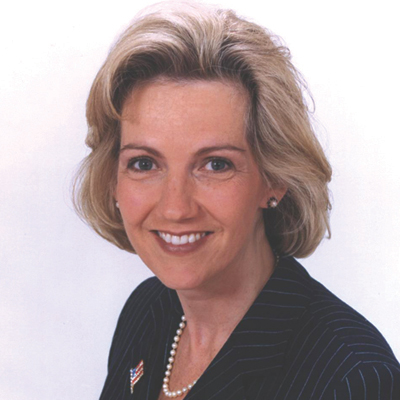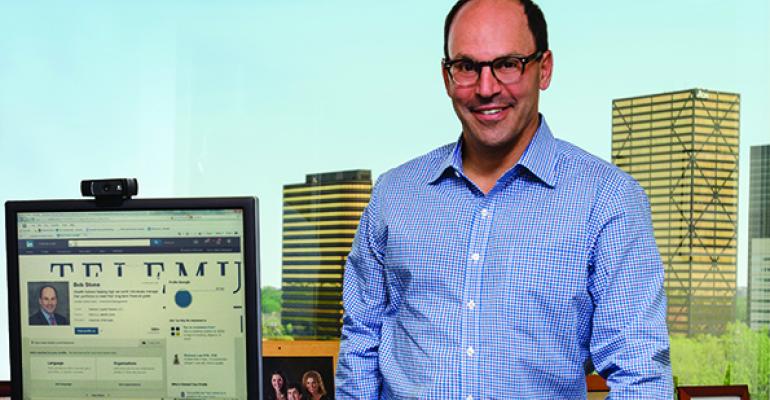Bob Stone, co-founder of Telemus Capital in Southfield, Mich., runs a thriving practice with about $2 billion in assets. His quandary is what to do about social media—Twitter and LinkedIn, specifically. He should be more active, he feels, but how to get started in earnest?
Stone and two brothers-in-law founded the practice in 2004, switching to a fee-only RIA model seven years later. It now has three offices and 43 employees, including a chief marketing officer. New business comes from a mix of client referrals, centers of influence, and civic activities.
As for social media, Stone has a LinkedIn page, frequently updates his profile, and occasionally uses the site to make connections. For example, he’ll read annual reports of nonprofits to see “who I would like to meet and who can connect me to that person,” he says. He’s also a member of 31 groups that he doesn’t participate in actively. He has 157 followers on Twitter, where he retweets interesting articles daily.
Ultimately, he sees LinkedIn as a potential generator of prospects—today’s version of cold calling and seminars. He thinks Twitter could be a way to demonstrate his and his firm’s knowledge. But in both cases, he isn’t clear about what the smartest objective and tactics should be. “I understand these are two very powerful tools. I just don’t know how to harness them,” he says.
Eventually, his marketing person will tackle social media, but she currently has her hands full rebranding the entire company. “For now I have to fend for myself,” he says.
Here’s what our panel of experts advises:
Matt Lynch
Managing partner, Strategy & Resources
First and foremost, he needs to be clear about what his social media strategy is. Some people use social media to reinforce their brand, to keep it top of mind for existing and potential clients. Others use it as a business development tool. Each of those requires a different strategy. He needs to be clear about
his objectives.

Then he needs to coordinate with his chief marketing officer in terms of the timing of the larger branding initiative. I think he should launch his social media strategy in coordination with the brand relaunch—all at the same time. And he needs someone to focus on social media.
He’s in an age group where they were brought up in the industry to, say, meet people in person for coffee. That’s a skill set a lot of younger people coming into the business don’t have—and a competitive advantage he can leverage. But he needs to connect it with a social media strategy—have his team use social media to support his traditional skills. For example, he would hand his social media person a list of 20 clients he’s meeting in the next two weeks. Then that individual would look at their LinkedIn accounts to see whom they’re connected to and produce a list of the top five most promising names. During the meeting, he can ask if he can connect to those contacts using the client’s name.
As for Twitter, retweeting of interesting articles is a great start. But he should think about the message he’s trying to get across through Twitter and use it as an extension of that brand. Also, he can use Twitter to get people to come to his website by, for example, linking them to an article or white paper on the site. Consistency is important. When followers see his posts, they should know what to expect.
Hellen Davis
CEO and co-founder, Indaba Global
I had exactly the same problem a couple years ago. Now more than 20 percent of our business is a direct result of LinkedIn.
The first thing we learned is you can’t buckshot all over the place. I was on so many groups, and it took so much time. We discovered you have to be very selective in the groups you join. And we learned to give away a lot of knowledge. It can’t be fluff; it has to be interesting stuff group members can’t get anywhere else. For example, we’ve shared our research that you’d normally have to pay $400 for. We do that a few times a year, so we’re seen as a giving type of organization. And it establishes our credibility. People love it, and then they become clients.

Also, his profile shouldn’t be generic, but very specifically targeted, with a mission statement and [information on] how they serve customers. All of his staff has to be linked to him, to show how big the firm is. Then he’s going to have to write and post 12 white papers a year, each not more than a page and a half, otherwise people won’t read it. Including charts and graphs is good.
If he wants to meet someone who’s on the board of a charity, he can look at who is on the board and if he knows any of them. Then he can ask that individual to connect him to the person he’s targeting. But he’ll already have established a reputation online by posting all those white papers.
The more he uses LinkedIn, the better the likelihood his name will pop up to the top when someone Googles him.
Brandon Odell
Director of business consulting, The Ensemble Practice
The firm is successful. They have a reputation. I don’t think he should divert a lot of effort and energy away from what is the best source of growth—referrals.
But certainly social media needs to be a part of any firm’s marketing strategy. After a prospect is introduced to him, that person will likely research the firm through social media. For that reason, he needs to be careful about the messaging he uses on social media. It should be shaped to complement the culture of the firm.

It’s important that this not be an individual effort, but at a firm level. That means on Twitter, he would use the firm’s handle. And his tweets should refer to that handle if he’s tweeting as an individual. The firm is the entity he should be trying to build and promote. As much as we want people to follow us, we need to try to drive as much traffic as possible back to the practice. If people read a tweet that they find insightful, it needs to reflect on both the advisor and the firm.
If many people on the team do this, then the firm’s name will get bounced around more frequently.






